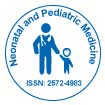当社グループは 3,000 以上の世界的なカンファレンスシリーズ 米国、ヨーロッパ、世界中で毎年イベントが開催されます。 1,000 のより科学的な学会からの支援を受けたアジア および 700 以上の オープン アクセスを発行ジャーナルには 50,000 人以上の著名人が掲載されており、科学者が編集委員として名高い
。オープンアクセスジャーナルはより多くの読者と引用を獲得
700 ジャーナル と 15,000,000 人の読者 各ジャーナルは 25,000 人以上の読者を獲得
インデックス付き
- Google スカラー
- レフシーク
- ハムダード大学
- エブスコ アリゾナ州
- ICMJE
役立つリンク
オープンアクセスジャーナル
このページをシェアする
抽象的な
Sensitivity and Specificity of Otoacustic Emissions in Newly Healthy Births without Risk Factors
Berlanga Bolado OM, Vázquez PR, Martínez Carmona RB, Ortega Tamez LC, Flores Nava FL and Fernández Jaso IV
Introduction: The World Health Organization reports an incidence of hypoacusis of 5/1000 live births; 2.1% of the world population suffers from a hearing deficit. In Mexico, the Human Communication Institute of the Ministry of Health estimates that 5,600 are born with hearing loss per year. Undiagnosed hearing loss has adverse effects on language, social, emotional, cognitive, academic and professional development. Objective: To verify the sensitivity and specificity of Hearing Otoacoustic emissions in healthy newborns without risk factors. Material and Methods: Prospective study with a probabilistic, descriptive, transversal, quasi experimental and analytical design. We studied 815 healthy newborns without risk factors. EOA and Brainstem Auditory Evoked Potentials were performed with the BERAphone equipment. Sensitivity, specificity, Negative Predictive Value and Positive Predictive Value were determined, using the ROC curve. The AUC value was determined, Pearson’s X2 test was used, and Fisher’s Exact Test was used for the distribution of both tests. Results: 1630 auditory tests were performed. A sensitivity of 63.64% and a specificity of 98.95%, an AUC of 0.805%, VPP 29.17% and VPN 99.75%, LH +60.60% and LH -0.37% of all the tests were detected. The right ear had a sensitivity of 40.0% and a specificity of 98.64%; In the left ear sensitivity of 83.33% and specificity of 99.26%. Conclusions: Otacoustic emissions in newborns without risk factors have a regular sensitivity and high specificity.

 English
English  Spanish
Spanish  Chinese
Chinese  Russian
Russian  German
German  French
French  Portuguese
Portuguese  Hindi
Hindi